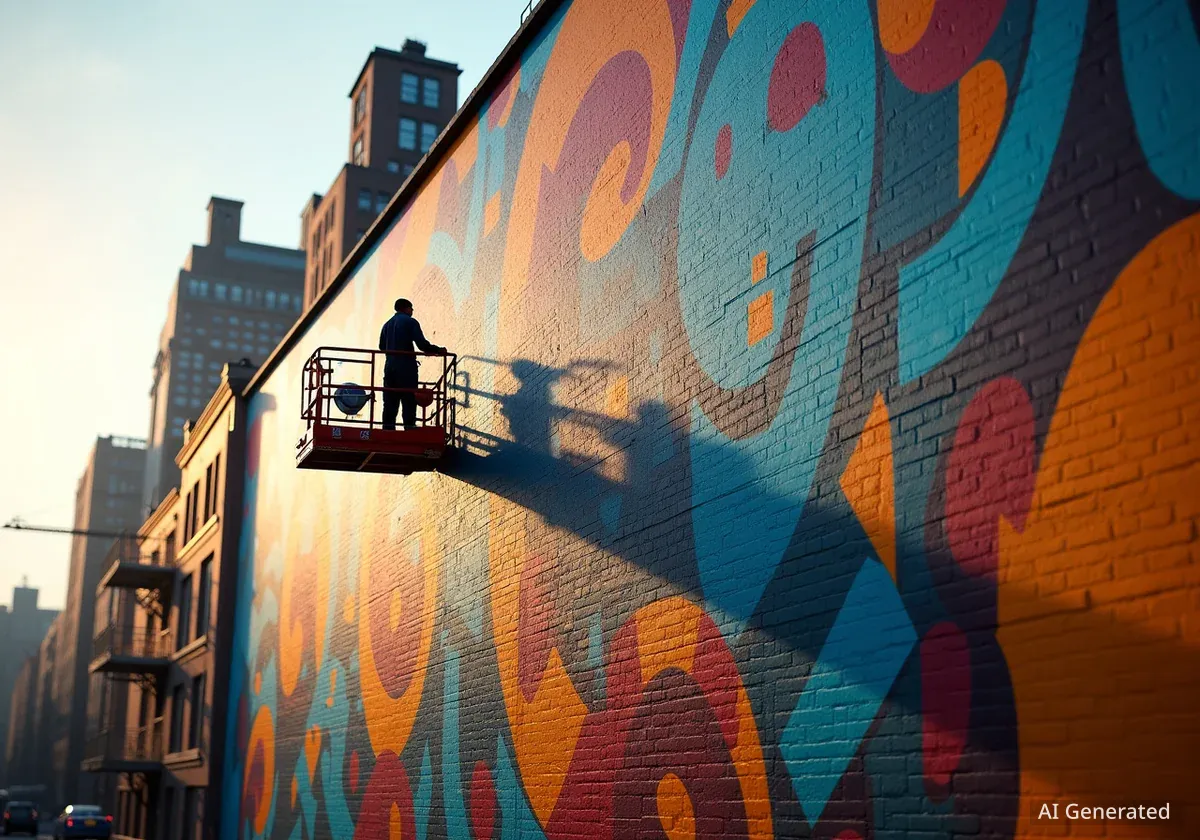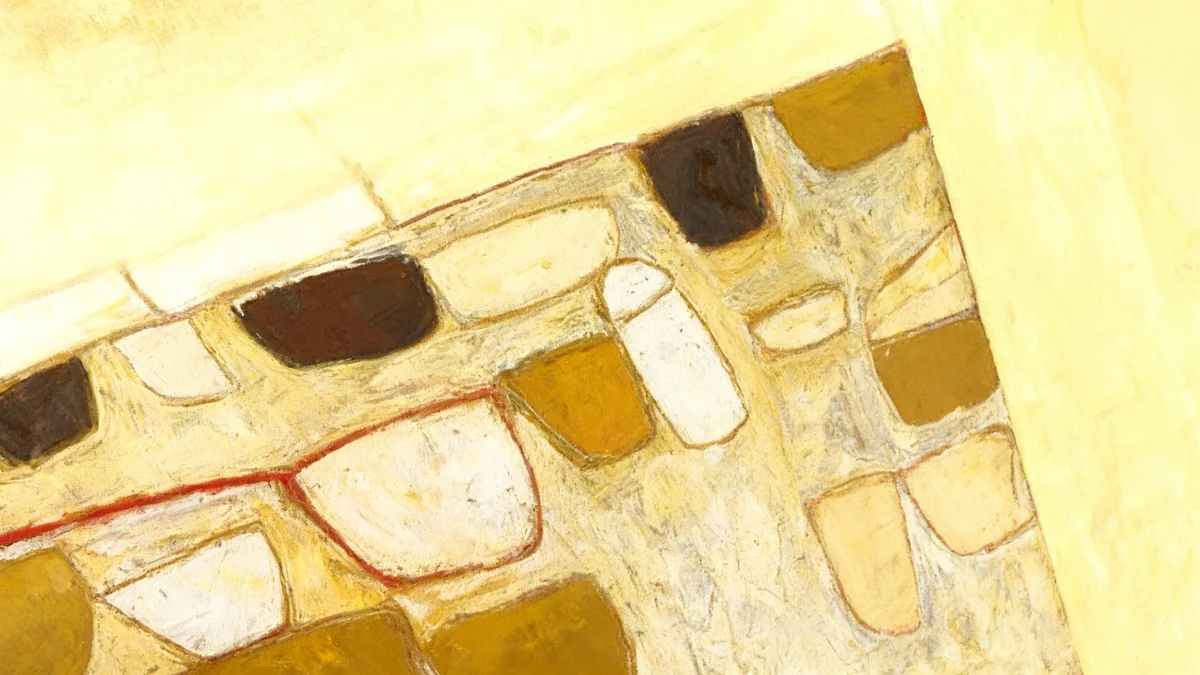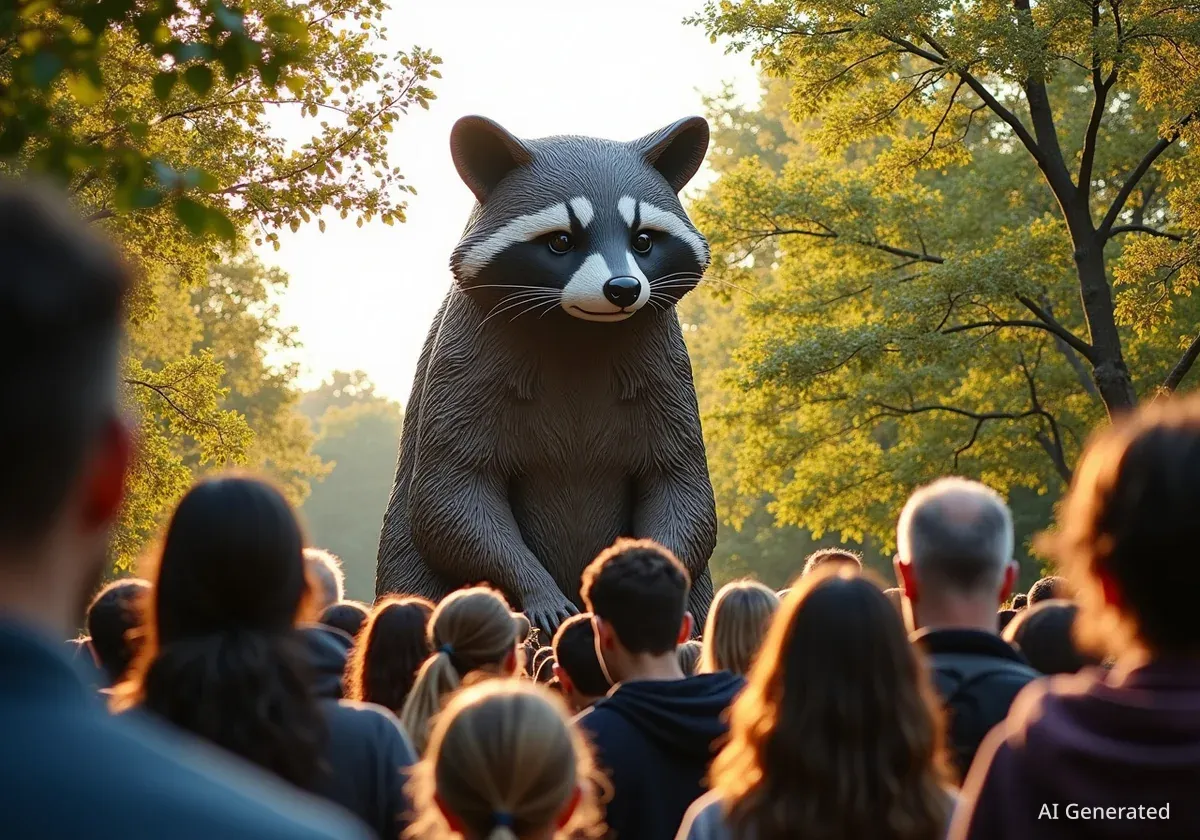Tucson, Arizona, is set to gain another significant piece of public art as local artist Joe Pagac completes his largest mural to date. This expansive artwork, located in Midtown near 5th Street and Alvernon Way, covers over 9,000 square feet. It surpasses Pagac's previous record, which was also the tallest mural in Arizona, by a substantial 1,000 square feet.
Pagac's distinctive style is already a familiar sight across Tucson, with his murals gracing prominent locations from Stone Avenue to Sixth Avenue and Grant Road. The creation of such a large-scale piece involves detailed planning and a unique artistic process, transforming initial concepts into towering, colorful displays that capture public attention.
Key Takeaways
- Joe Pagac is completing his largest mural in Tucson, covering over 9,000 square feet.
- The new mural is located in Midtown, near 5th Street and Alvernon Way.
- This project is 1,000 square feet larger than Pagac's previous record-setting mural.
- The artist uses a grid system and electric paint sprayers for large-scale execution.
- Pagac emphasizes the importance of design flexibility and challenging his own artistic vision.
The Scale of Public Art: A New Record for Tucson
Joe Pagac's latest project marks a significant milestone in Tucson's public art landscape. The mural's sheer size, exceeding 9,000 square feet, makes it a prominent feature in the Midtown area. This scale demands careful consideration of perspective and public interaction.
According to Pagac, one of the primary challenges is ensuring the artwork is effective from multiple viewpoints. He notes,
"I have to make sure that it's going to work from a bunch of different angles because people are going by on the street from all different directions, the building's popping out."This attention to how viewers experience the mural from various distances and movements is crucial for its success.
Mural Dimensions
- New Mural Size: Over 9,000 square feet
- Location: Midtown, near 5th Street and Alvernon Way
- Comparison: 1,000 square feet larger than Arizona's previous tallest mural (also by Pagac)
From Concept to Concrete: The Artistic Process
Creating a mural of this magnitude involves a precise and multi-step process. Pagac begins with a design on paper, which then needs to be accurately transferred to the large building surface. He employs a detailed grid system for this transfer, measuring down to the inch to maintain proportion and accuracy.
The artist explains his method:
"No matter what size your painting is, if you use the same number of brush strokes, you end up with a good painting."This philosophy guides his approach, even when working on monumental scales. The initial application of color often involves electric paint sprayers, used to block out large sections before fine details are added with traditional brushes.
Adapting the Vision
The artistic journey is not always linear. Pagac's original design for the Midtown mural underwent significant changes. Collaboration with the building owners led to an evolution of the concept. This back-and-forth process resulted in a final product that differed substantially from his initial sketches.
Pagac embraces this adaptability. He states,
"It's almost nothing like it was."This willingness to modify his vision is a core part of his creative philosophy. He believes that such challenges are essential for growth and improvement as an artist.
Joe Pagac's Impact on Tucson
Joe Pagac has become a household name in Tucson for his vibrant and often whimsical public murals. His artworks frequently depict local flora and fauna, dynamic scenes, and imaginative characters, contributing to the city's unique cultural identity. His murals serve as popular landmarks and photo opportunities for residents and tourists alike, enhancing urban spaces with color and creativity.
Challenges and Evolution in Art
Pagac sees the iterative nature of his work as a positive force. He highlights the importance of pushing artistic boundaries.
"Because if you just paint what's in your own head all the time, you don't challenge yourself,"he remarks. This perspective suggests that external input and design adjustments can lead to stronger, more engaging artworks.
The artist also reflects on the long-term journey of an artist. He shares a common saying: "They say art is an old man's game where hopefully, you just keep getting better at it until you die." This sentiment underscores a commitment to continuous learning and improvement throughout an artistic career, regardless of current achievements.
- Initial Design: Often a starting point, not a fixed end.
- Collaboration: Working with building owners can reshape the final vision.
- Flexibility: Essential for adapting to new ideas and challenges.
- Growth: Challenging oneself leads to better artistic outcomes.
The Future of Public Art in Tucson
This new mural by Joe Pagac not only adds to his impressive portfolio but also further cements Tucson's reputation as a city that values public art. Such large-scale installations contribute to the aesthetic appeal of urban areas and foster a sense of community pride. They transform ordinary walls into canvases that tell stories and spark conversation.
The ongoing creation of public art pieces, especially those of significant size and visibility, continues to draw attention to local artistic talent. It also highlights the collaborative efforts between artists and property owners to enhance the visual environment for everyone. Pagac's work, in particular, has become synonymous with Tucson's vibrant and artistic spirit.




